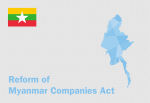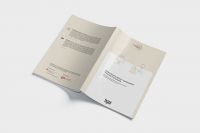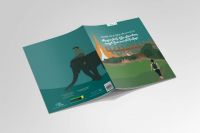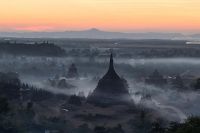Cable Car Slated for Mount Kyaiktiyo
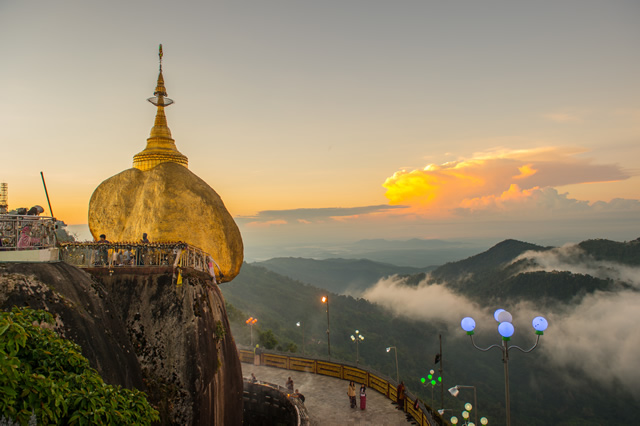
This article was originally published on DVB.no
News of a cable car planned for Mon State’s famed Mount Kyaiktiyo next year has been greeted with a mixed reaction.
The project is backed by a Korean-owned company, one of many businesses from the country reportedly looking to profit from Burma’s growing economy.
Yoo Sun-ha, CEO of Korean owned Sky Asia, is quoted in the Korean Herald as saying: “The cable car will give easier access to Kyaiktiyo Pagoda, better known as the Golden Rock, located at the summit of the 1,100-meter high mountain.’’
Kyaiktiyo is a well-known Buddhist pilgrimage site and is ranked first on a list of attractions to visit in Mon State by top travel forum Tripadvisor.
According to legend, the Golden Rock is precariously perched on a strand of the Buddha’s hair. The balancing rock seems to defy gravity, as it perpetually appears to be on the verge of rolling down the hill. Nowadays a 7.3-metre pagoda sits atop the granite boulder, which is covered with gold leaves pasted on by Buddhist devotees. The Golden Rock marks the peak of Mount Kyaiktiyo, and is considered the third most important Buddhist pilgrimage site in Burma after the Shwedagon Pagoda and the Mahamuni Pagoda.
However, an assessment by the Myanmar Centre for Responsible Business reports poor waste disposal and waste management in Kyaiktiyo, which poses a serious threat to the environment.
Vicky Bowman, the director of the centre, tells DVB: “At Kyaiktiyo, even without a cable car, no proper environmental conservation and waste management has been introduced. The pagoda trustees have installed dustbins, but when they are filled with litter, the workers tip them over the mountainside. We should not only have signs about littering but also raise awareness about the need to protect heritage sites.
“Significant sums in donations and entrance fees are collected but there is no transparency between user fees for protected areas and how these fees are used for conservation. Income from increased visitors should all stay with the site management and be used for the protection of the site,” she urged.
In contrast, Buddhist scholar and religious studies lecturer Paul Fuller has positive sentiments towards the development, saying: “A cable car is relatively unobtrusive if it is built in a sensitive way.”
However, he also highlights that the three-hour climb to the pagoda seems to be part of the merit of the pilgrimage, as “the effort made, and the offerings made on the way, are intended to accrue benefits for those undertaking a religious pilgrimage.
“Some [pilgrimages] historically and around the world entail tremendous effort and arduous journeys, requiring a great deal of sacrifice of those undertaking them. This would be somewhat destroyed by taking a cable car. It could also have a negative impact on businesses along the route who rely on those walking to the pilgrimage site,” Fuller said.
Plans by the Mon State government to boost tourism have also seen the approval of coastal hotel zones, with developments slated for completion in 2017.
Bowman told DVB: “I really want to see Mon State developed for tourism, as there are so many interesting sites like Zokthouq, the salt and ngapi [fermented fish] business in Pa-Nga, and the cottage industries like rubber band and slate manufacturing in Bilugyun. If the local communities and tourist operators can be consulted on how to turn these into tourist destinations, local jobs can be created and Mon cultural heritage and cottage industries like salt making and rubber can be preserved.”
“At the same time, the infrastructure for tourism – accommodation, transport, waste – also needs to be designed with minimum environmental and social impact. There needs to be community consultation about what kind of tourism development the local community wants,” she said.
Read also
- Tourism Sector
- New Report and Upcoming Webinar on Human Rights in Tourism
- White Paper on Tourism in Myanmar
- Planning for a Brighter Future in Mrauk U: Cultural Heritage and Tourism Management
- 4th National Conference on Communities and Tourism 2019
 English
English မြန်မာ
မြန်မာ မြန်မာ (unicode)
မြန်မာ (unicode)

